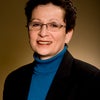During the holiday season, many of us used our smartphones to take pictures and to show family members and friends pictures of events that had occurred during the past year. Many of us don't even print photos anymore. It wasn't always that way - photography evolved and with it the women who used cameras to record many important events in U.S. history. Match the photographer with her accomplishment:
____ 1. The first issue of Life magazine in 1936 featured her photograph on its cover.
____ 2. Among her Depression-era photos is "Migrant Mother" which now hangs at the Library of Congress.
____ 3. Most well-known as a portrait photographer, she was selected as the official photographer for the 1996 Summer Olympics held in Atlanta, Georgia.
____ 4. The "court photographer" for five presidential administrations.
____ 5. Her photographs of unusual people in New York City was featured in a 1972 retrospective that toured the U.S.
A. Frances Benjamin Johnston
B. Dorothea Lange
C. Margaret Bourke-White
D. Diane Arbus
E. Annie Leibovitz
Regarded as the "court photographer" for the Harrison, Cleveland, McKinley, Theodore Roosevelt, and Taft Presidential administrations, Frances Benjamin Johnston was one of the earliest female photographers and photojournalists. Her first camera was a gift from George Eastman, the founder of Eastman Kodak. After studying art in Paris, she returned to the U.S. and established a reputation as a photographer and businesswoman. Johnston opened a studio in Washington, DC in 1894. Her reputation was solidified when she documented the success of what is today Hampton University, the first higher educational institution to admit both African American and Native American students. Her interest in architectural photography documented buildings and gardens and led to her becoming an honorary member of the American Institute for Architects. Her work is housed at the Library of Congress.
Best known for her Depression-era photography, Dorothea Lange began taking photos in the 1920s as she traveled the Southwest. In the 1930s, she turned her focus to images of the Depression. In the 1930s, she documented the hardships caused by the Depression on assignment for the Farm Security Administration. This effort includesd her most well-known portrait, "Migrant Mother", which is now hanging at the Library of Congress. She became the first woman to receive a Guggenheim Fellowship in 1940. Among her later works were photos of Japanese-American internment camps. Lange has been inducted into the National Women's Hall of Fame.
Known for her photographs of industry, Margaret Bourke-White's photo of the Fort Peck Dam graced the cover of the first issue of Life magazine in 1936. A pioneer in the field of industrial photography, she became the first foreign photographer to have access to the former Soviet Union (in 1930) where she recorded the industrialization that was occurring. Bourke-White pioneered in the field of photojournalism and photo essay. She has been inducted into the National Women's Hall of Fame.
A very unique photographer, Diane Arbus is most well-known for her photographs of unusual people in New York City. Her first photographs were in advertising and fashion but she branched out to photos of people as she wandered around the City. Her work had a raw quality and was featured in Esquire magazine. In 1972, a posthumous retrospective of her work was mounted by the Museum of Modern Art in New York City and then traveled around the U.S. She was the subject of the 2006 movie Fur in which she was played by Nicole Kidman.
Developing her technique while at Rolling Stone, photographer Annie Leibovitz is considered one of the country's best portrait photographers. Her work graced many covers of the magazine and were known for their use of colors and surprising poses. In 1991, the National Portrait Gallery featured over 200 of her photographs and she was selected as the official photographer of the 1996 Summer Olympics in Atlanta, Georgia. She has published books and, today, continues to work as a portrait photographer.
Learn about more she-roes and celebrate amazing women. These photographers are among the more than 850 women profiled in the book Her Story: A Timeline of the Women Who Changed America. We celebrate their accomplishments and benefit from their efforts.
(Answers 1-C, 2-B, 3-E, 4-A, 5-D )
